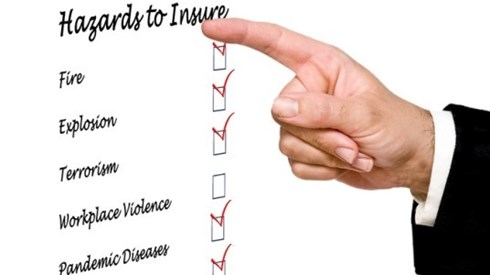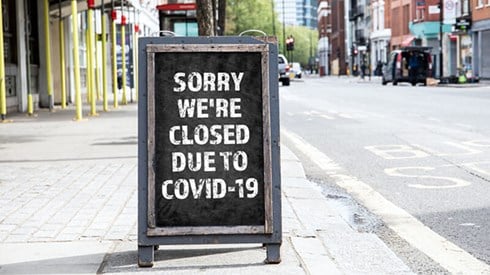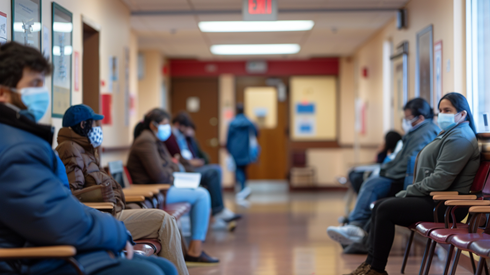Captive Insurance Breaks Barriers To Indemnify against COVID

Jeremy Colombik | February 14, 2022

Editor's Note: Jeremy Colombik, president of Management Services International, shares his views on why captive insurance may make sense for businesses facing COVID-related insurance coverage gaps.
News that could ruin your day is finding out your insurance claim is not covered by your policy. This can happen and has happened to business owners hit with COVID-related communicable disease liabilities.
The vacillating pandemic cycle that engulfs our population is straining insurance company resources beyond available assets and astounding policyholders with shortfalls in coverage. Due to pandemic restrictions and conditions, claims for lowered use risk rebates couple with increased communicable disease claims, placing insurance companies in a payment bind.
Pandemic restrictions cause dentists to lose patients and movie theaters to lose patrons. Theme parks, restaurants, sports arenas, and fitness and martial arts centers are all experiencing business interruption (BI) that threatens to close their establishments. Facing BI and other ambiguous policy exclusions, businesses are discovering gaping holes in coverage for communicable disease-related exposures specific to COVID.
The pandemic has increased risk in all forms of business and collective interactions. Changes to the social paradigm are demanding upgrades to risk management structures. Insurance companies struggle to underwrite new policies and adjust claims in favor of balancing their books.
Exacerbating fractured conditions is acceleration in direct communicable disease liability specific to pandemic issues. Business owners who submit claims for communicable disease-related loss experience contested claims, even when they are covered specifically for loss related to COVID-19. The projected tendency among insurance companies is to further constrict payment on policyholder claims and increase exclusions on communicable disease coverage for all lines of business.
Consequently, BI often excludes coverage for lost revenue, personnel losses, or restoration requirements. Denied claims hit hard against pandemic-burdened business owners, leaving them in search of more-inclusive coverage.
The need for insurance companies to retain monetary assets may extend to reducing underwriting capacity for all coverages, increasing premiums, and raising deductibles. In extreme cases, insurers are attempting to fully pull out of difficult markets.
Bottom line, as COVID-related loss extends along numerous business lines, traditional insurance companies are not indemnifying against communicable disease. Tightening coverage leaves businesses in crisis mode, damaging their business prospects and the insurance industry's reputation.
Captive Insurance Fills Gaps in Coverage
The need to relieve accelerated demands on the insurance industry and to appease the chagrin of abandoned policyholders is causing insurance companies and insured clients alike to seek insurance alternatives.
Captive insurance stands ready to fill coverage gaps left vacant by the traditional insurance market. Also known as "captives," captive insurers generate coverage options that financially empower businesses to manage risk left uncovered by the general insurance market.
As well, traditional insurers may beneficially engage captive insurance companies as partners or subsidiaries. An insurance company can thereby transfer certain liabilities to reinsurance options, relieving the company of exceptional claims and allowing for the underwriting of more-comprehensive coverage.
Captive Insurance Erases "Lack" from Insurance Coverage
According to the National Association of Insurance Companies (NAIC) ("Captive Insurance Companies," NAIC Center for Insurance Policy and Research, NAIC website, last updated February 28, 2021), "approximately 90 percent of Fortune 500 companies have captive subsidiaries." Captive insurers partner with insurance brokers and agents to provide risk management options to independent businesses.
The captive provides reinsurance of exceptional risk for insurance company associates and collaboratively creates reinsurance alternatives for businesses that need to manage losses for which coverage may be unaffordable in commercial markets.
In compliance with state regulations, a captive manager administers company operations and secures insurance options. Expert collaborators confer with clients to specify requirements for risk management. Actuaries proficient in captive disciplines calculate risk margins and loss reserves to specify the premium.
As well, captive insurers retain the risk margin of unclaimed coverage as profit to their clients, an unavailable option in traditional insurance coverage. Plus, the fact that captive insurance loss reserves are deductible before taxes cumulatively expands tax deductions to increasingly monetize premium costs against taxes.
Captive brokers are true coverage advisers, active in freeing their clients from standardized coverage that may generate unnecessary costs or exempt coverage the insured actually needs. The captive initiative is to therefore corroborate with the client for efficient risk management, consequently increasing insurance awareness and formulating resourceful coverage.
Advantages in Captive Insurance Communicable Disease Coverage
Admittedly, insurance companies exhibit obvious gaps in their coverages, especially in respect to claims against COVID-related communicable disease. Businesses continue to undergo countless losses related to COVID while they also experience uncertainty in insurance companies honoring their claims. Many traditional insurers don't even cover communicable disease.
Concerning sizable COVID loss, captive insurers can uncouple communicable disease policy components from the balance of the client's liability. Actuaries and underwriters can analyze specified risk levels based on required liability limits and the business risk profile to assess the most affordable premium.
Captive coverage is framed to finitely specify and include the precise premium amount to manage the assessed risk, making it best prepared to manage risk exposure to communicable disease. Captive coverage can especially encompass contingent business interruption (CBI) for lost earnings as well as BI damages or loss of assets stemming from conditions of COVID-related communicable disease. Depending on the business risk profile, CBI coverage can even include continuing rent and payroll expenses.
Captive insurers fill a primary insurance gap left by traditional insurance companies as they provision cost-effective longer-term BI and shorter-term CBI coverages that directly relieve risk exposure to communicable disease.
For the benefit of business and insurance markets, it is important that risk holders facing exposure to COVID communicable disease contingencies collaborate with captive insurers for more secure coverage of their liability. Captives may even provide communicable disease riders to provide additional coverage adjunct to existing policies. Captive managers, actuaries, and underwriters formulate the most advantageous approaches to supplementing a client's current insurance coverage or fully creating exceptional insurance options.
Reliable business continuance is essential. Hence, also essential are frameworks designed to indemnify businesses for loss. Facing the challenge of coverage requirements, insurance companies must either reformulate their business model to affordably assimilate coverage for new loss or engage partners who can manage risk while minimizing loss ratios.
Business sustainability helps secure the supply chain. Consequently, indemnification of business interests against loss is economically beneficial. In addition, the task of building an enterprise warrants assurance that unforeseen consequences may not devastate the effort.
Captive insurance fills communicable disease coverage gaps that threaten the sustainability of insurance companies and business enterprises. Captives are structured and administered for exceptional liability with capabilities to innovatively transact tenable risk management. Thus, the captive model is primed to provide full coverage or to cover packaged risk distinct from the traditional policy.
As we continue to live through COVID pandemic contingencies, insurance companies and businesses require the communicable disease risk management captive insurance companies provide. Business and insurance risk holders can conveniently initiate captive coverages upon their next renewal date.
Jeremy Colombik | February 14, 2022






